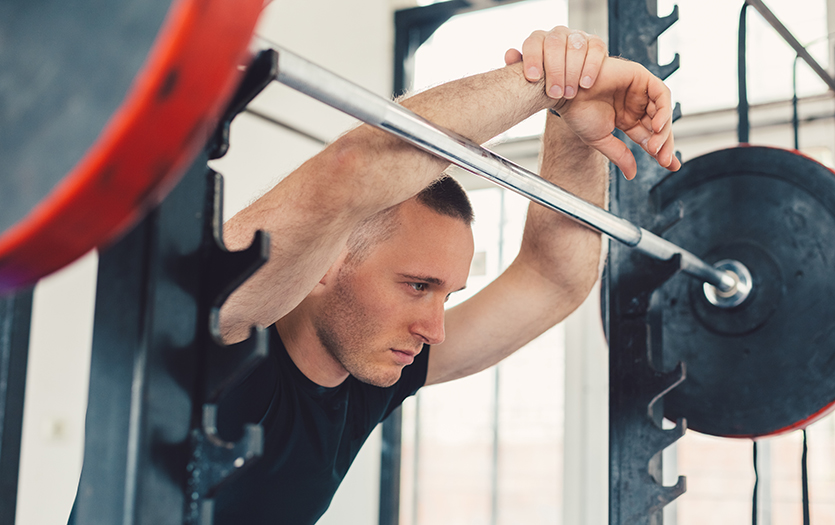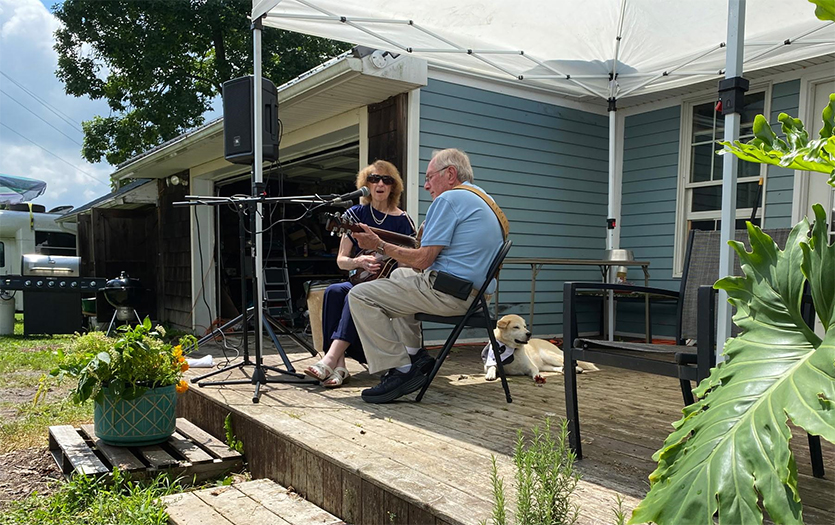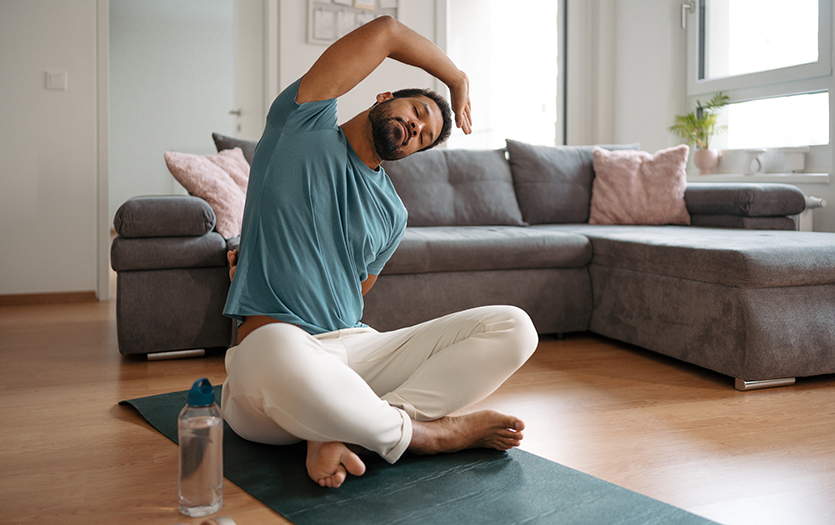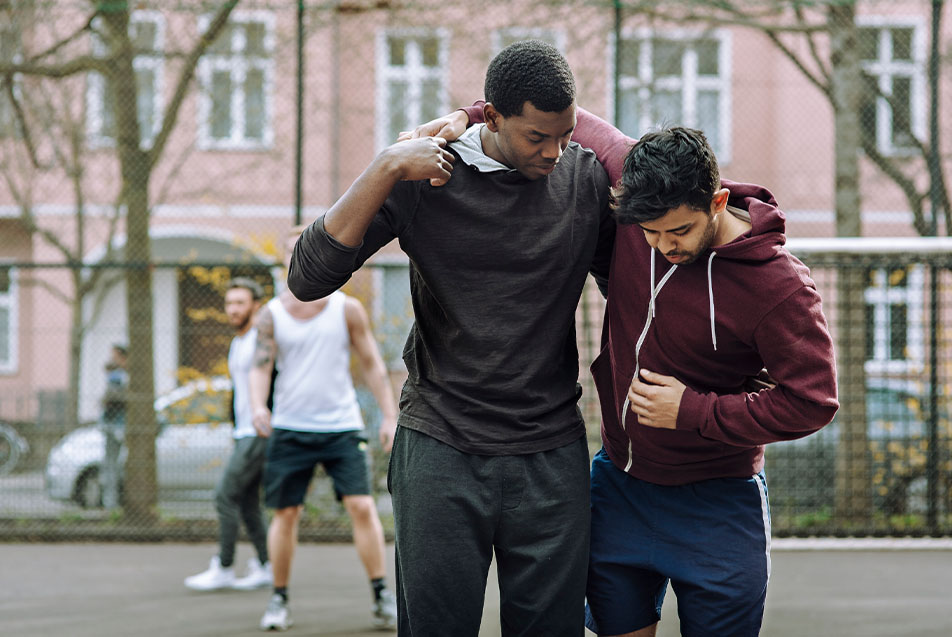
Sore muscles and fatigue are part of being an athlete, but most injuries can be avoided when competitors take the proper precautions before engaging in physical activity. The Parkview Sports Medicine team takes a moment to highlight a few of the most common sports injuries, how they occur, the best ways to prevent them and the most effective treatment options to get all the weekend warriors back on their feet.
Cheer
Injury No. 1: Concussion
How it happens: Concussions occur because of a rapid acceleration or deceleration of brain tissue within the skull resulting from a fall or blow to the head.
How to prevent it: A few precautions could include "safety circles" while stunting, education and instruction on proper stunting techniques, and practicing on tumbling mats instead of hard floors or surfaces.
How we treat it: It's best to seek care from a physician for a proper diagnosis. Concussions can be treated by getting plenty of rest, reducing activities that increase symptoms and refraining from exercise until symptoms subside. Athletes should only resume activity with the approval and under the supervision of a healthcare provider.
Injury No. 2: Ankle sprain
How it happens: Falling from a stunt, during a jump or misstep in a tumbling routine could result in an ankle sprain.
How to prevent it: A few preventative precautions could include practicing proper technique, stretching before practice, performing strengthening activities outside of practice, executing flyer drills to prepare for balancing while in the air and wearing ankle braces if there is a history of chronic ankle sprains.
How we treat it: If an athlete is unable to walk pain-free, a boot or crutches may be needed. Additionally, ace wraps can be utilized to help with swelling and reducing pain. Rehab with an athletic trainer may also be necessary to help strengthen surrounding muscles and increase range of motion. Many athletes can return to normal activity within two weeks, but healing could take up to several months, depending on the severity of the injury.
Injury No. 3: Wrist sprain
How it happens: This wrist injury can be acute or chronic and occur due to overuse, injury or a fall.
How to prevent it: The best way to avoid a wrist sprain is by stretching before practices and competitions or using circular wrist taping to help with pain and support during overuse or injury.
How we treat it: It's best to refrain from any offending activity. Rehab with an athletic trainer may be needed to help stretch and strengthen surrounding muscles. Most people can return to activity immediately or within several weeks, depending on the severity of their sprain.
Injury No. 4: Muscle strain
How it happens: Muscle strain is often due to the improper stretching or sudden lengthening of muscles during physical activity.
How to prevent it: Warming up and stretching before every practice or competition can go a long way in preventing muscle strain.
How we treat it: Muscle strains are best treated by resting, reducing aggravating activities, engaging in non-painful movements and stretching to strengthen strained and surrounding muscles. Depending on the severity of the strain, most athletes can return to activity within a few weeks or a couple of months.
Swim and Dive
Injury No. 1: Muscle strain
How it happens: Muscle strain is often due to the improper stretching or sudden lengthening of muscles during physical activity.
How to prevent it: Properly warming up and stretching before every practice or competition will help prevent muscle strain.
How we treat it: Muscle strains are best treated by resting, reducing aggravating activities, engaging in non-painful movements and stretching to strengthen strained and surrounding muscles. Depending on the severity of the strain, most athletes can return to activity within a few weeks or months.
Injury No. 2: Wrist sprain
How it happens: This wrist injury can be acute or chronic and occur due to overuse, injury or a fall.
How to prevent it: The best way to avoid a wrist sprain is by stretching before practices, competitions and executing preventative exercises.
How we treat it: It's best to refrain from any offending activity. Rehab with an athletic trainer may be needed to help stretch and strengthen surrounding muscles. Most people can return to activity immediately or within several weeks, depending on the severity of their sprain.
Injury No. 3: Labral tear
How it happens: A labral tear can occur after a traumatic event, fall or overuse.
How to prevent it: Proper stretching, warmups and combination workouts of closed and open chain exercises can help strengthen surrounding muscles. Be sure to seek medical care the moment any pain begins.
How we treat it: Surgery is one treatment option for a labral tear. After surgery, rehab with a physical therapist and/or athletic trainer may be necessary. Be sure to avoid any offending exercises but continue to strengthen surrounding muscles to maintain and increase range of motion. It can take nine months to a year to return to normal activity levels.
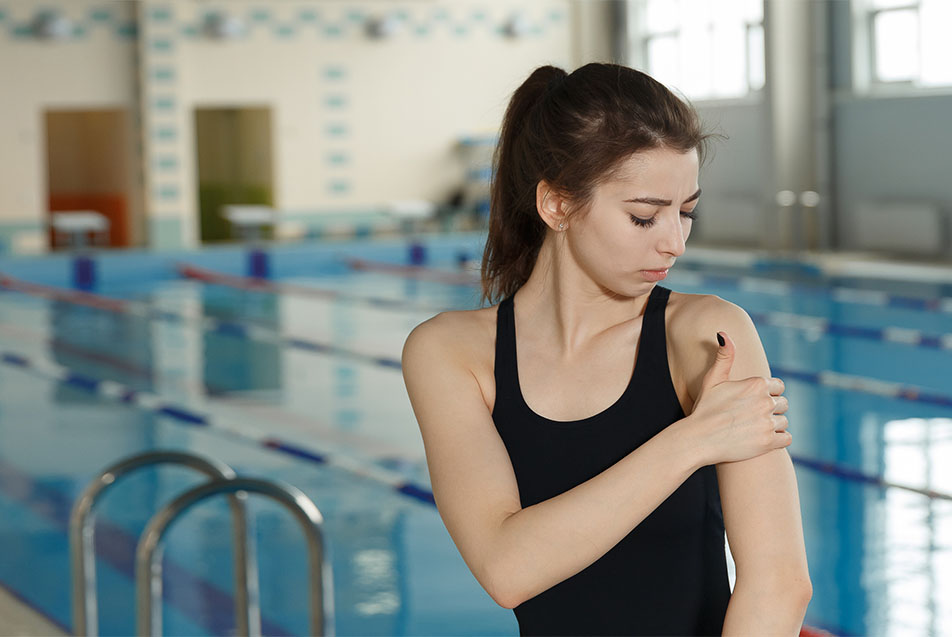
Basketball
Injury No. 1: Ankle sprain
How it happens: Ankle sprains can occur by stepping on another foot, landing a jump on an uneven surface, resulting in the ankle pivoting or inverting.
How to prevent it: The best preventative measures for an ankle sprain include ankle strengthening exercises, ankle braces and proper shoes.
How we treat it: Rest, ice, ACE bandages to help disperse swelling and rehabilitation with an athletic trainer, including range of motion activities and strengthening activities, can help treat ankle strains. Most people can return to normal activity within 7-35 days, depending on severity.
Injury No. 2: Anterior cruciate ligament tear
How it happens: An anterior cruciate ligament tear occurs when an athlete lands incorrectly from a jump and then plants their foot while twisting at the knee.
How to prevent it: Practicing proper landing form, strengthening hamstrings and quadriceps, and avoiding awkward movements can help prevent tears.
How we treat it: Surgery is often the treatment for this type of tear along with physical therapy to regain range of motion and strength. Most individuals resume activity in about nine months, but the progression is sport-specific.
Injury No. 3: Hamstring strain
How it happens: Hamstring strains are often due to striding during a sprint or working out without warming up properly.
How to prevent it: It's best to warm up thoroughly before activity, including stretching to increase flexibility. Athletes should never compete in a cold environment.
How we treat it: Rest, ice, hot packs before practicing, limiting activity and rehabilitation involving strengthening and flexibility are all great treatment options for hamstring strains. Most resume activity in 0-30 days, depending on the severity of the injury.
Gymnastics
Injury No. 1: Ankle strain
How it happens: This type of injury can happen by landing poorly after a tumbling pass, jumping, vaulting, attempting a skill or coming off an implement.
How to prevent it: Practicing continuous awareness of proper technique, utilizing a good dynamic warmup, stretching and preventative ankle strengthening are all great preventative measures. An ankle brace might also be practical for some events.
How we treat it: Getting plenty of rest, limiting activity as needed and treating the ankle for swelling and pain with ice and compression are all treatments for ankle strains. Rehabilitation focusing on mobility, stability and strength is also an option. Most athletes return to normal activity between one and eight weeks, depending on severity.
Injury No. 2: Low back injuries
How it happens: These can range from low back strain, stress fractures and hernia disks. Usually, back injuries are caused by abrupt movements in a certain direction, direct blows or continuous high stress activity.
How to prevent it: A warmup and stretching session is vital, as well as understanding proper techniques to remain safe. Making flexibility and strength for stability a priority is crucial in preventing injury. Learning how to fall can also be important for preventing injuries from high apparatuses.
How we treat it: Rest, decrease or cessation in activity, and strengthening and mobility rehab are all ways to treat many back injuries. Some of the more severe injuries may require bracing, immobilization or surgery. Remember, if someone is experiencing loss of feeling, paralysis, changes in speech or vital signs or bilateral numbness, emergency services should be called immediately. Most individuals can return to activity between 0-3 months depending on the injury.
Injury No. 3: Stress fractures
How it happens: Stress fractures usually occur due to continuous stress or impact to an area.
How to prevent it: Monitoring how many times certain high stress skills are done in a timeframe and understanding proper technique for landing or holding your body will go a long way in preventing stress fractures. Also, watch for early signs of injury, like pain, swelling, redness or point tenderness.
How we treat it: Usually an x-ray will confirm or deny a stress fracture. It's best to discontinue activity until told otherwise by an orthopedic physician. The stress fracture site will likely be immobilized in a walking boot or brace. Following bracing procedures and rehabilitation, focusing on mobility and strength will be important. Most athletes can return to normal activity in 4-8 weeks.
Wrestling
Injury No. 1: Shoulder dislocations
How it happens: Impact with the mat, restrictive holds and twists of the arms can cause a should dislocation.
How to prevent it: Flexibility and strength training are necessary in preventing dislocations. Stretching and weightlifting can help to decrease these injuries.
How we treat it: This type of injury is best treated by repairing the dislocation. Rehab will increase shoulder strength. In severe cases, surgery may be necessary. Treatment of shoulder dislocation can differ in each circumstance. Some dislocations can cause damage to the surrounding ligaments and tissue in the shoulder, which may require surgical repair. Minor dislocations can occur without causing damage to the shoulder and will have a much shorter recovery time. Going forward, a shoulder has a much higher risk of recurring dislocation without proper rehab. Most people can expect to return to activity anywhere from a few days to several months if surgery is required.
Injury No. 2: Cauliflower ear
How it happens: Cauliflower ear occurs when the skin and cartilage of the ear separate due to trauma, allowing the ear to fill with blood, which eventually hardens.
How to prevent it: Correctly wearing protective headgear during competition and practices can help prevent cauliflower ear.
How we treat it: This injury is often treated by draining the ear by way of an incision or syringe. Treatment of cauliflower ear can typically be done in a doctor's office. A pressure bandage may be applied to keep the shape of the ear during healing. If left untreated, a cauliflower ear may require plastic surgery.

